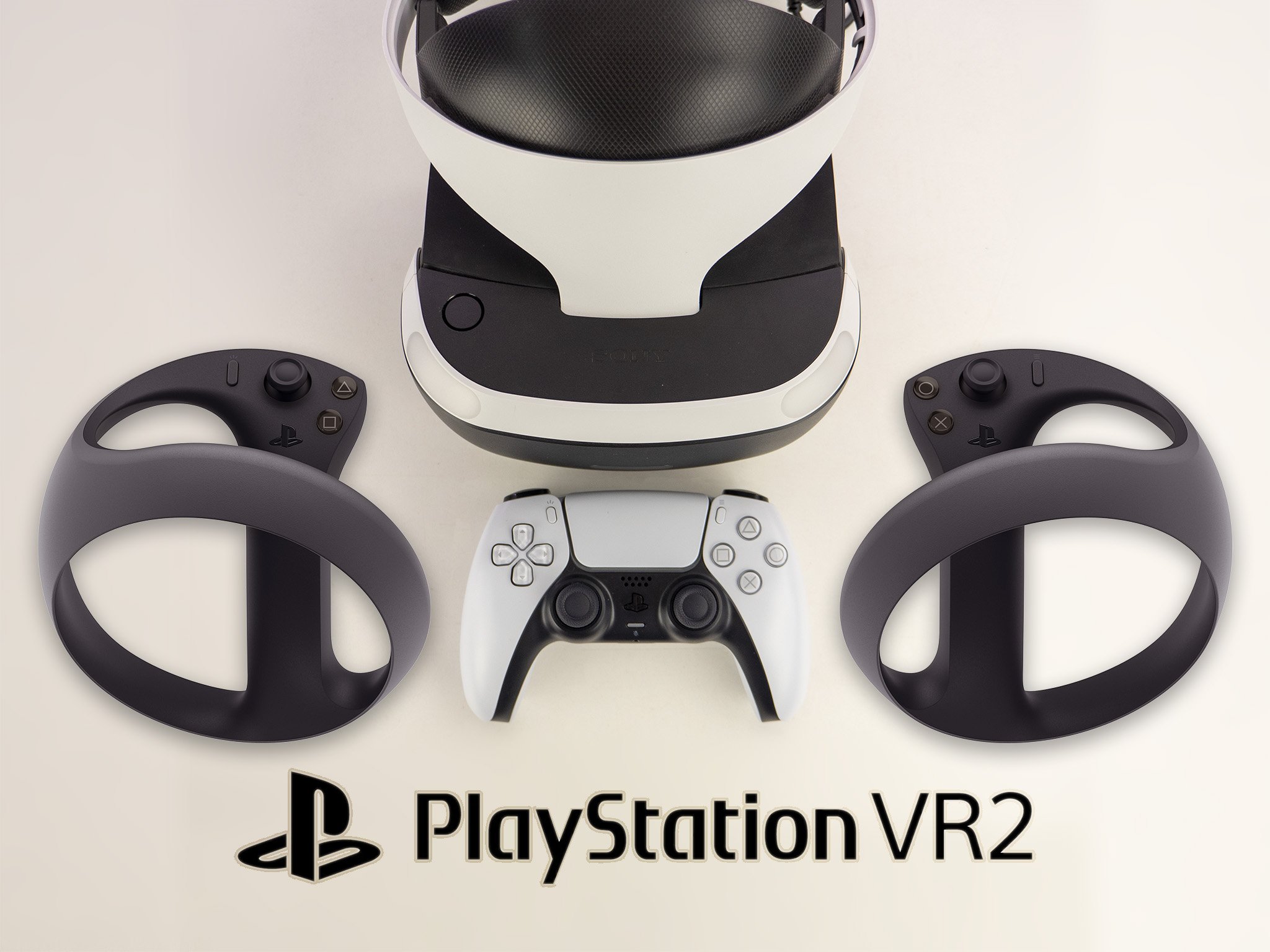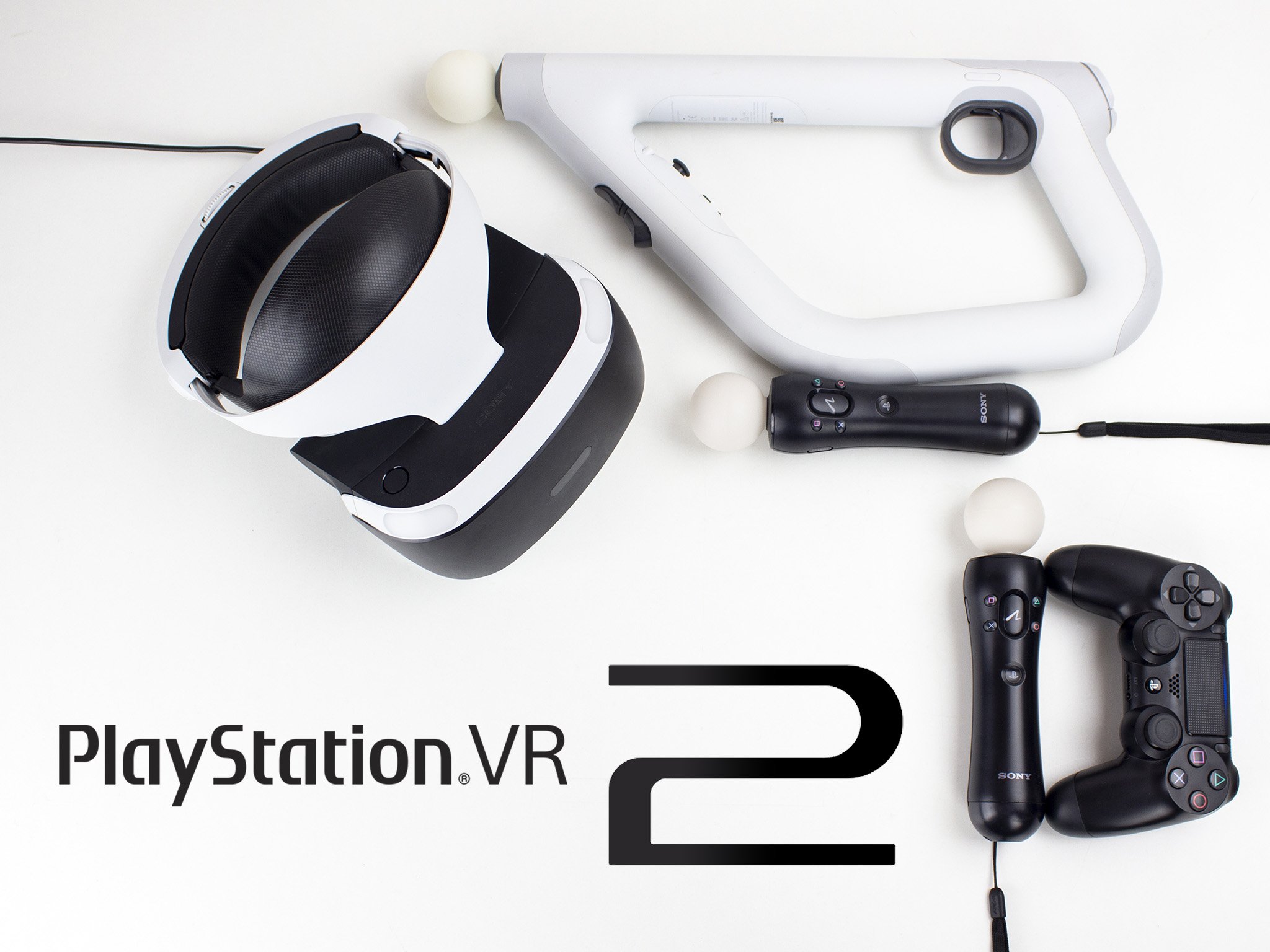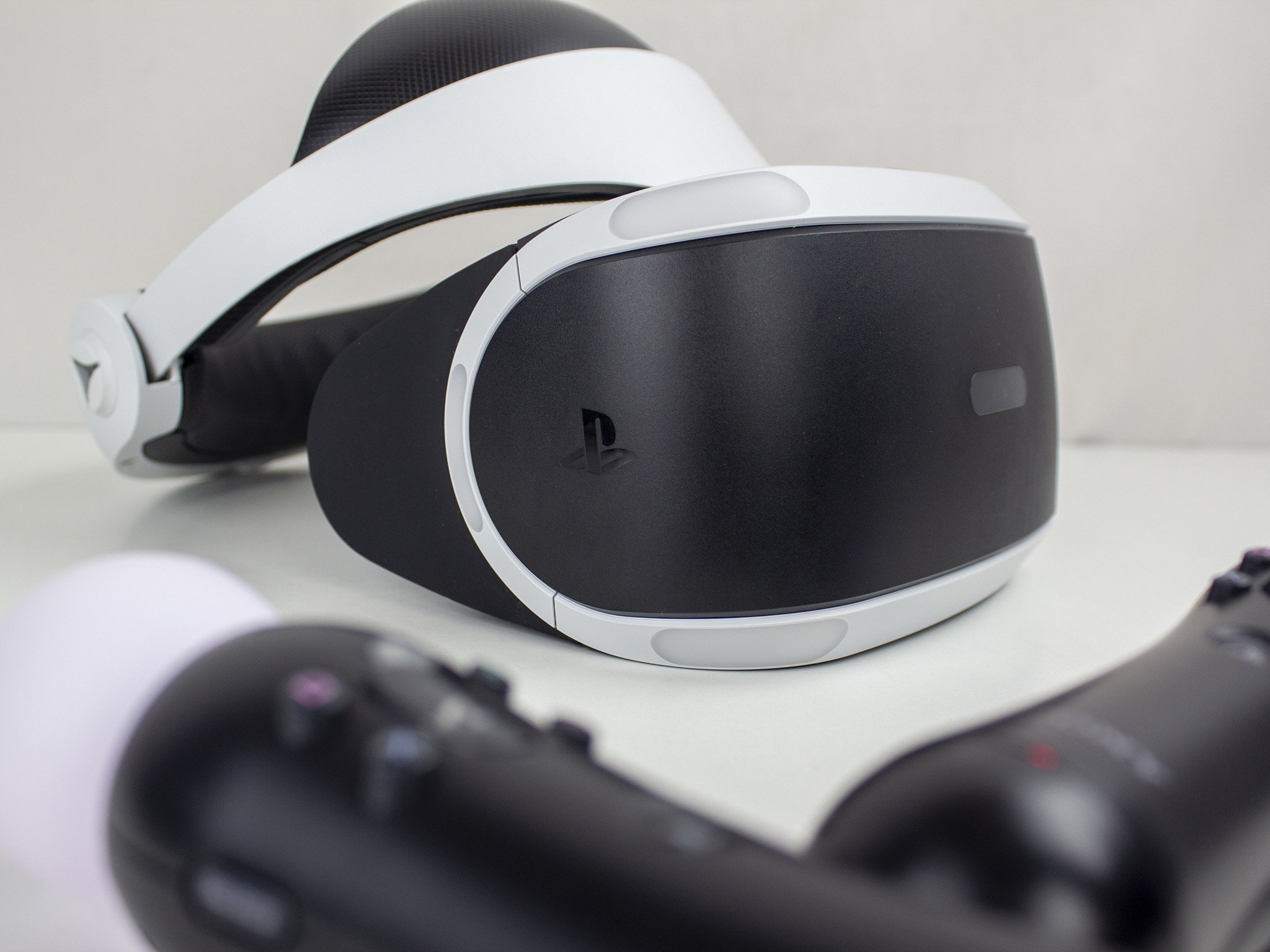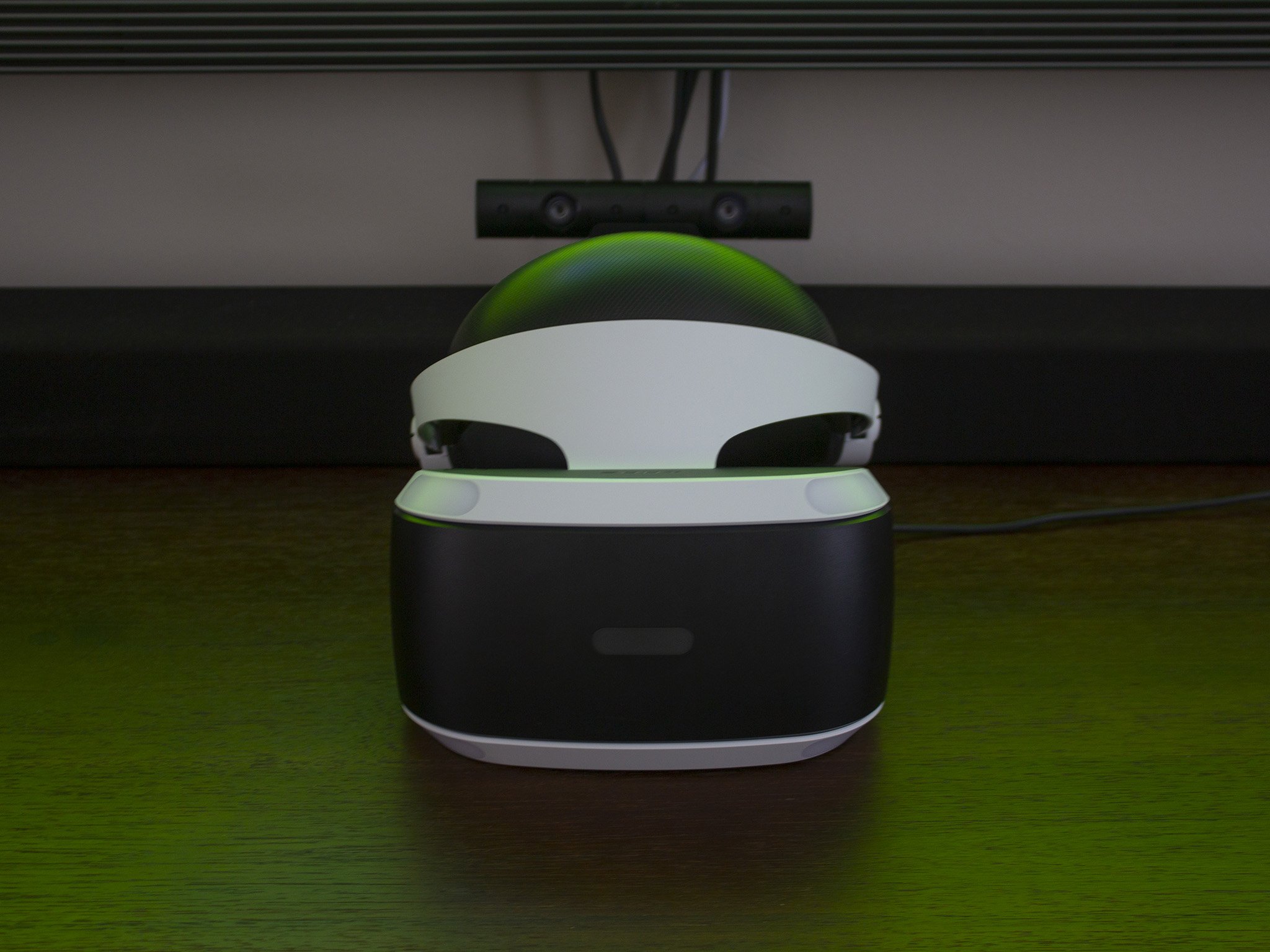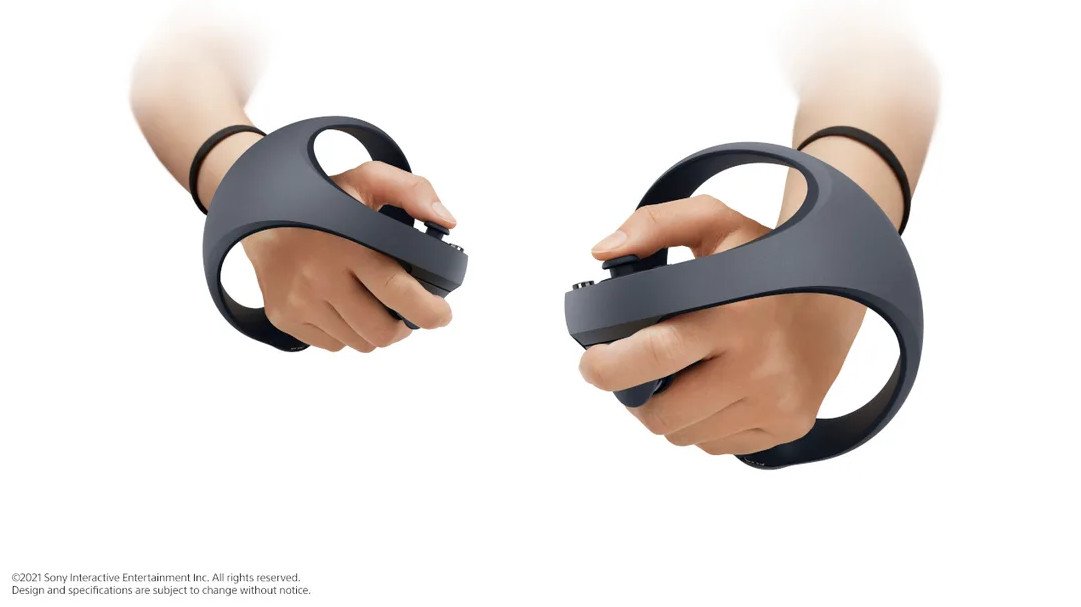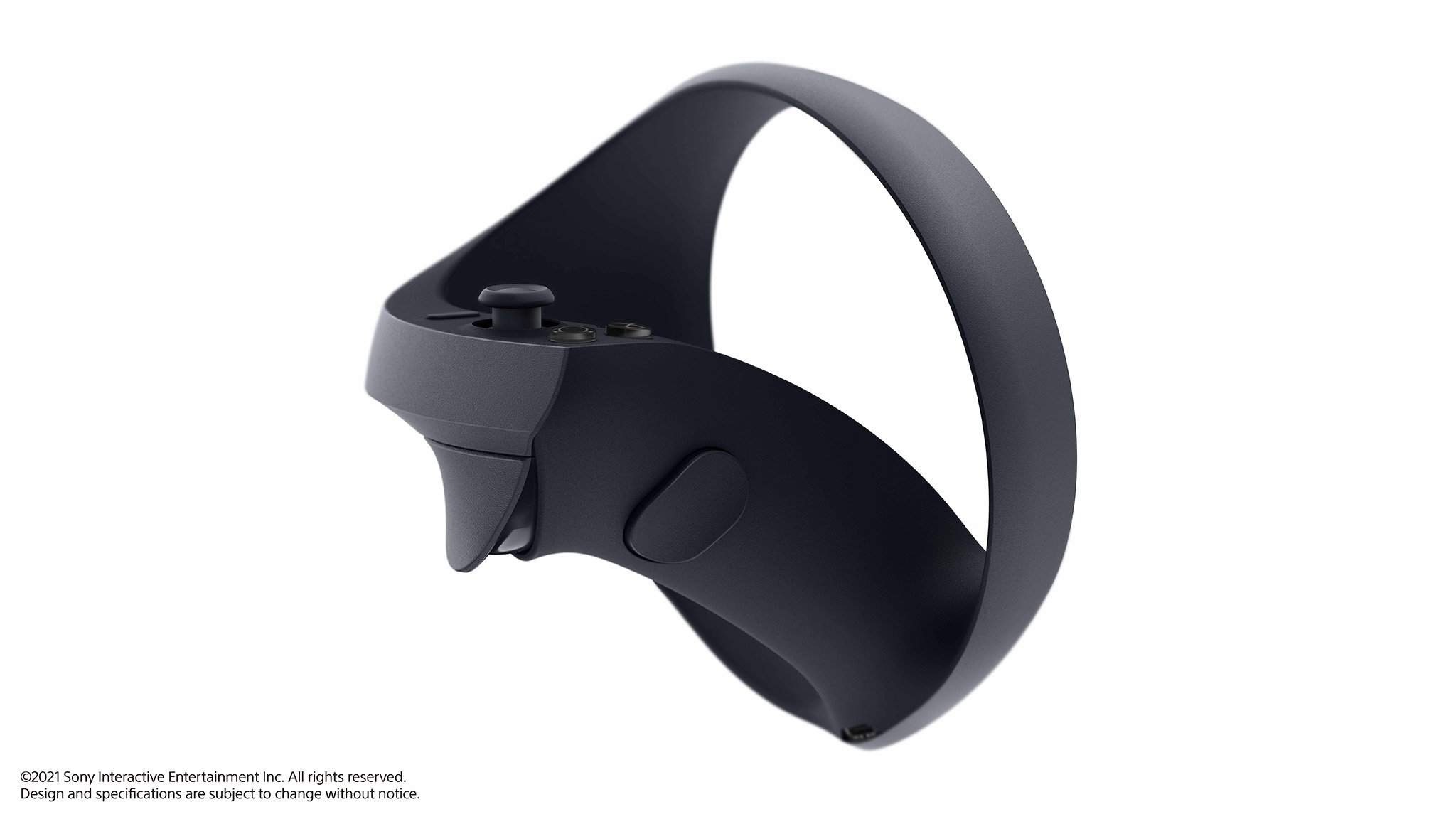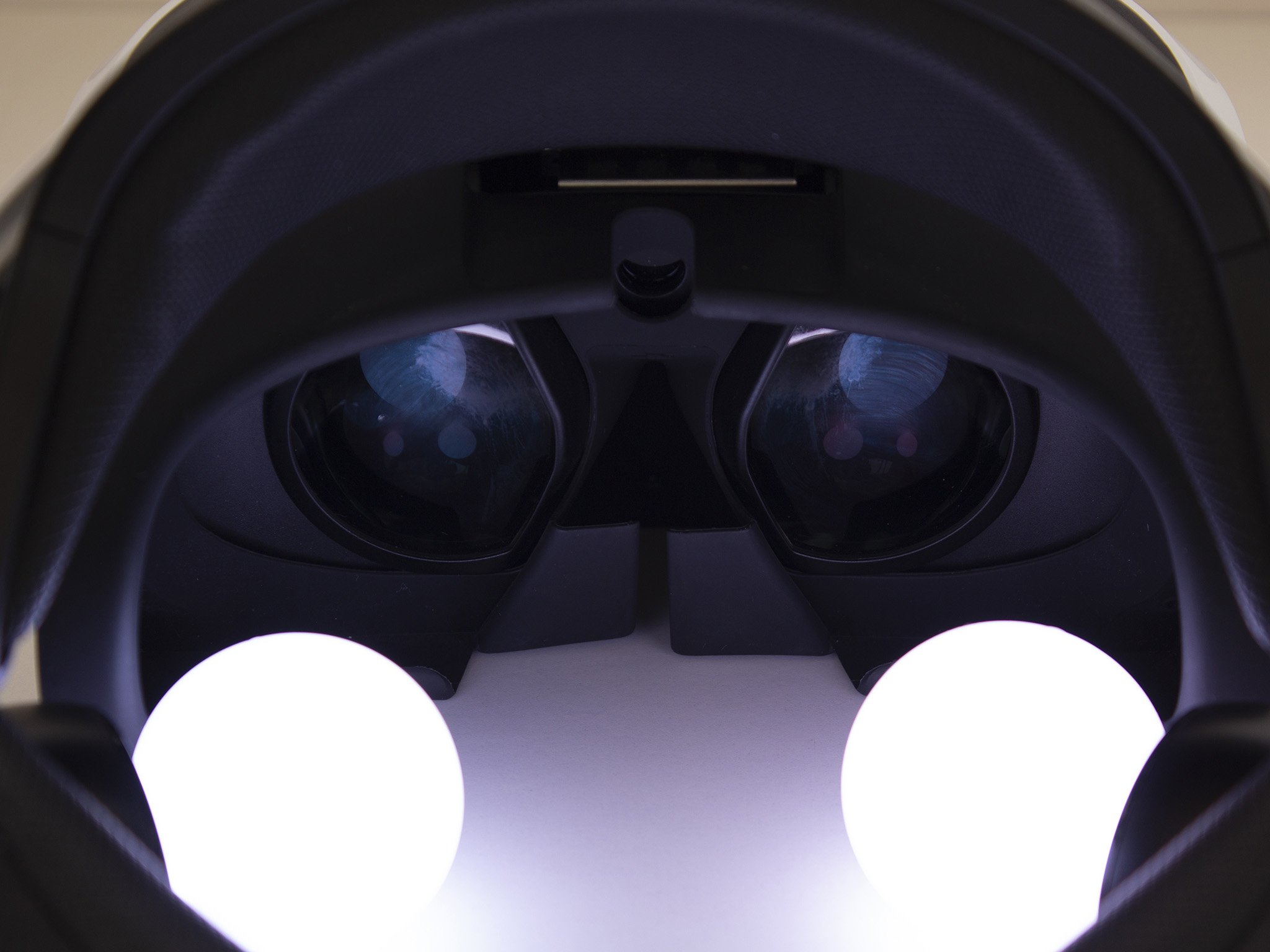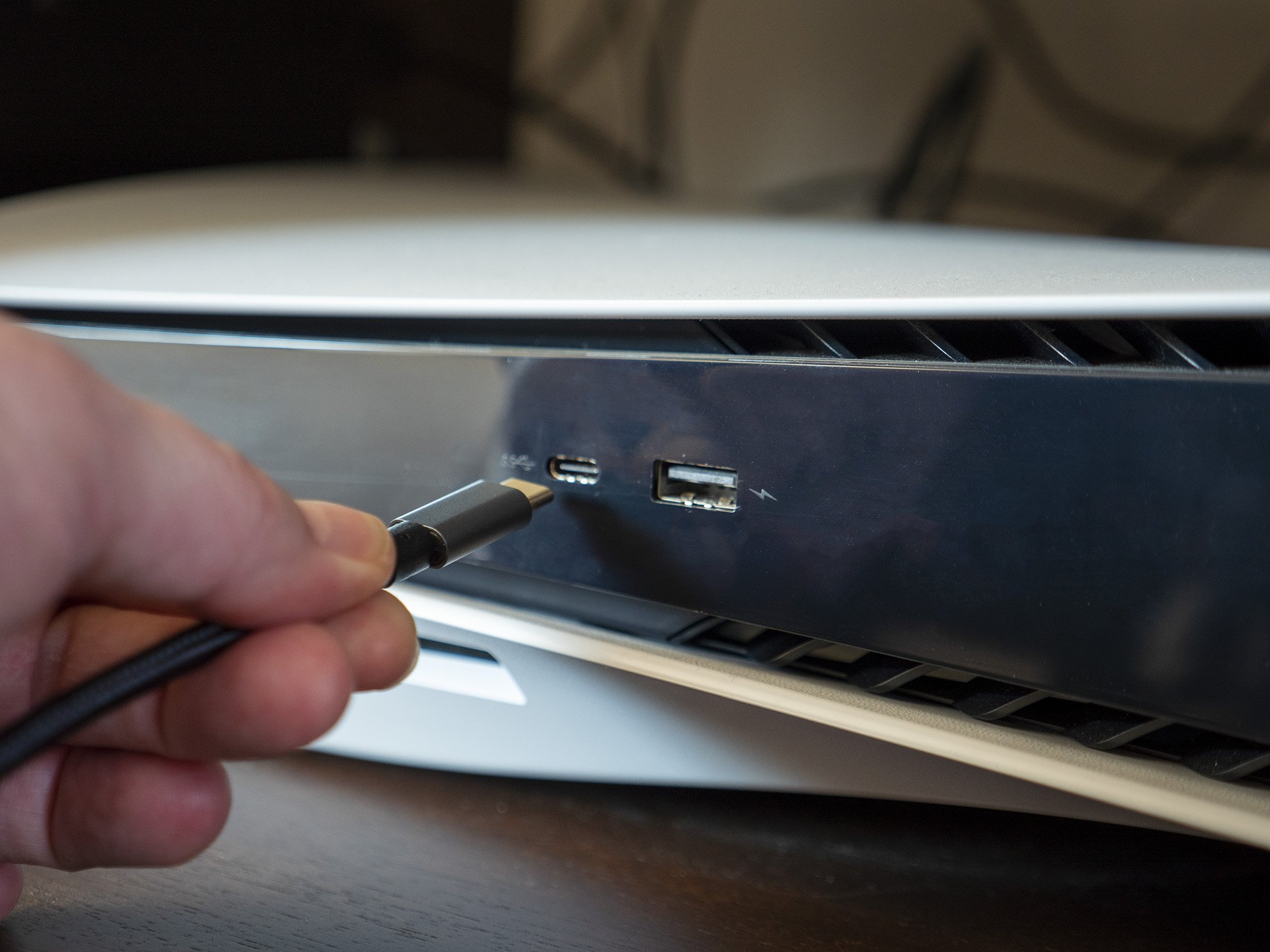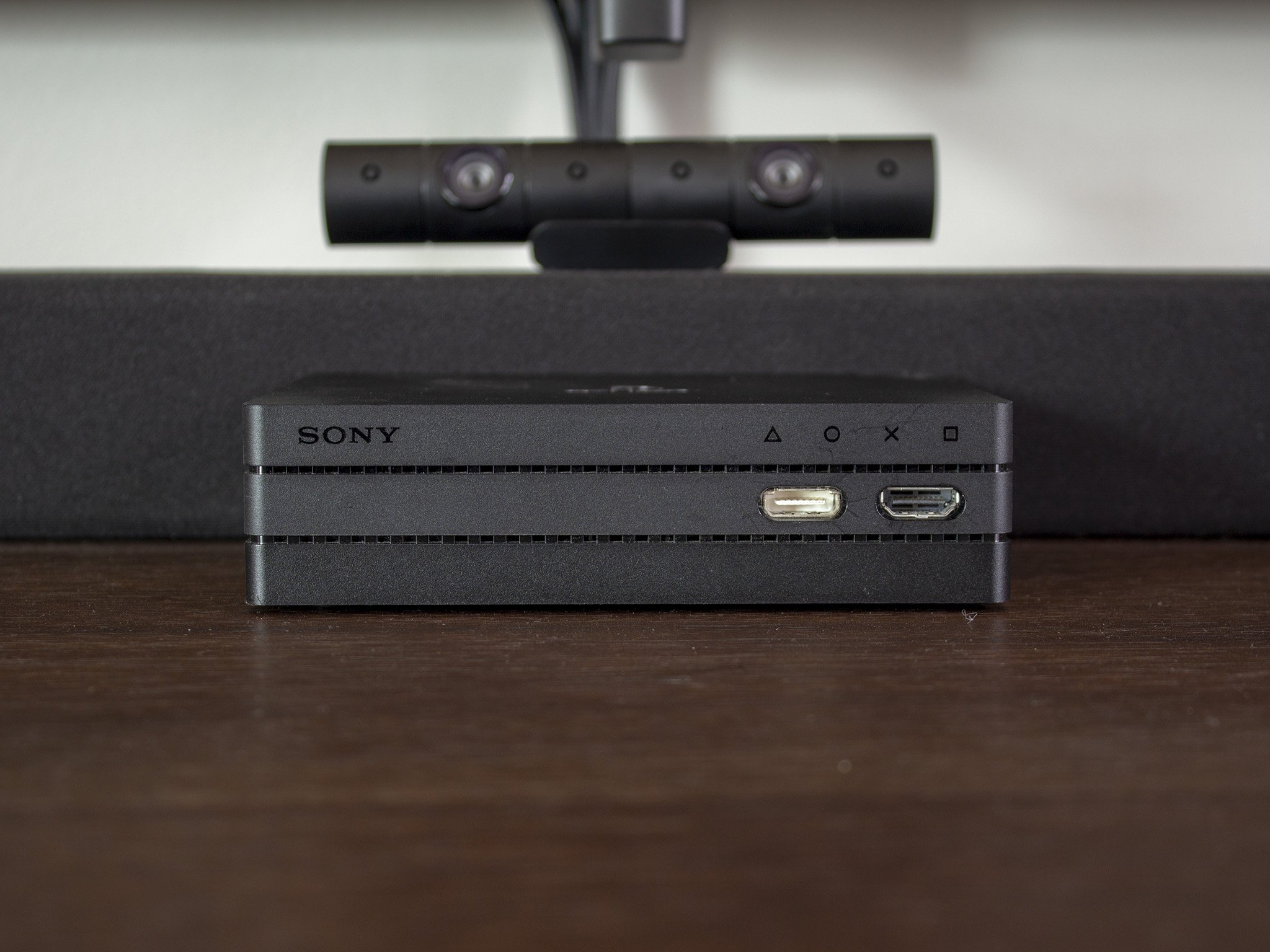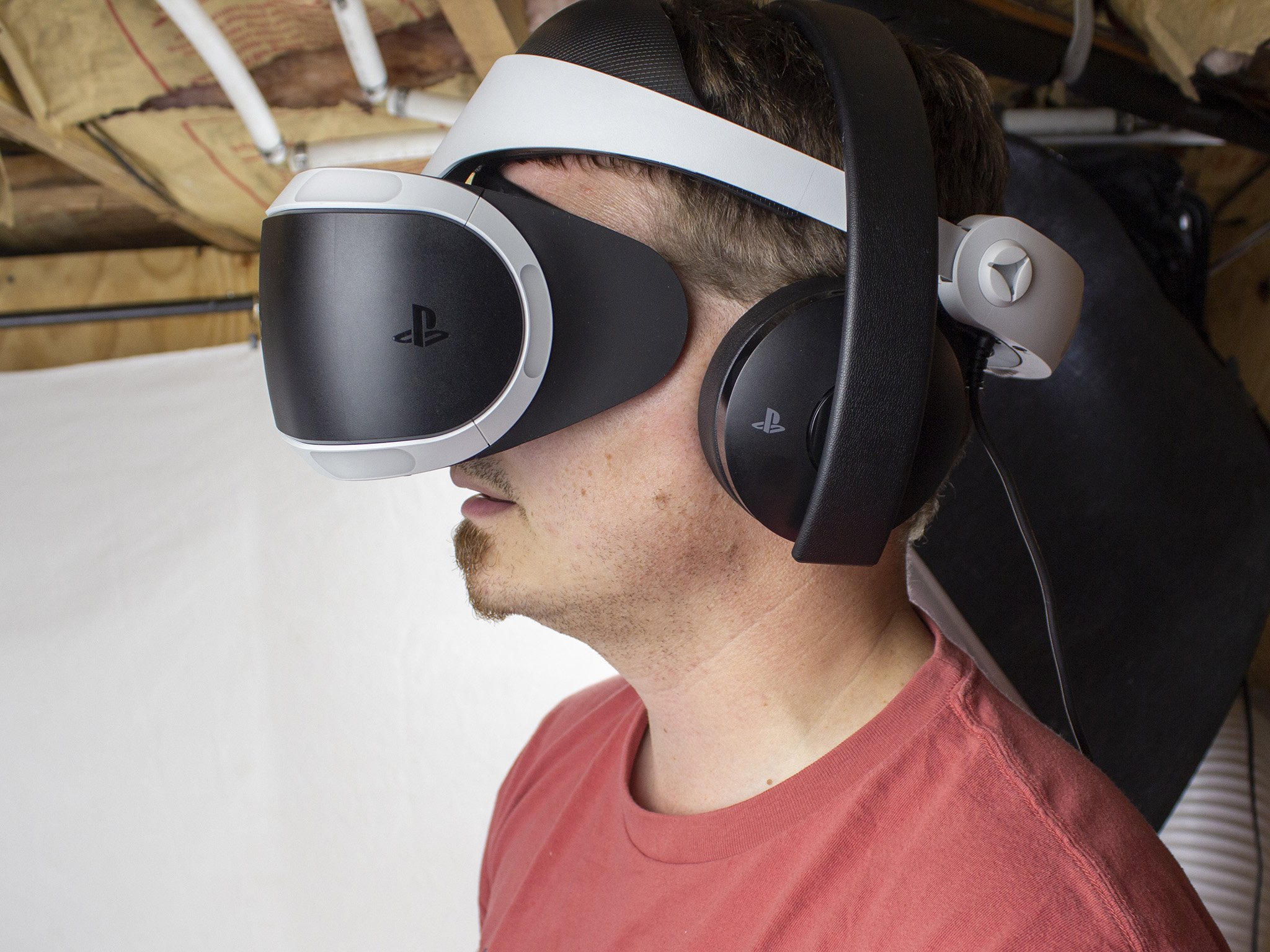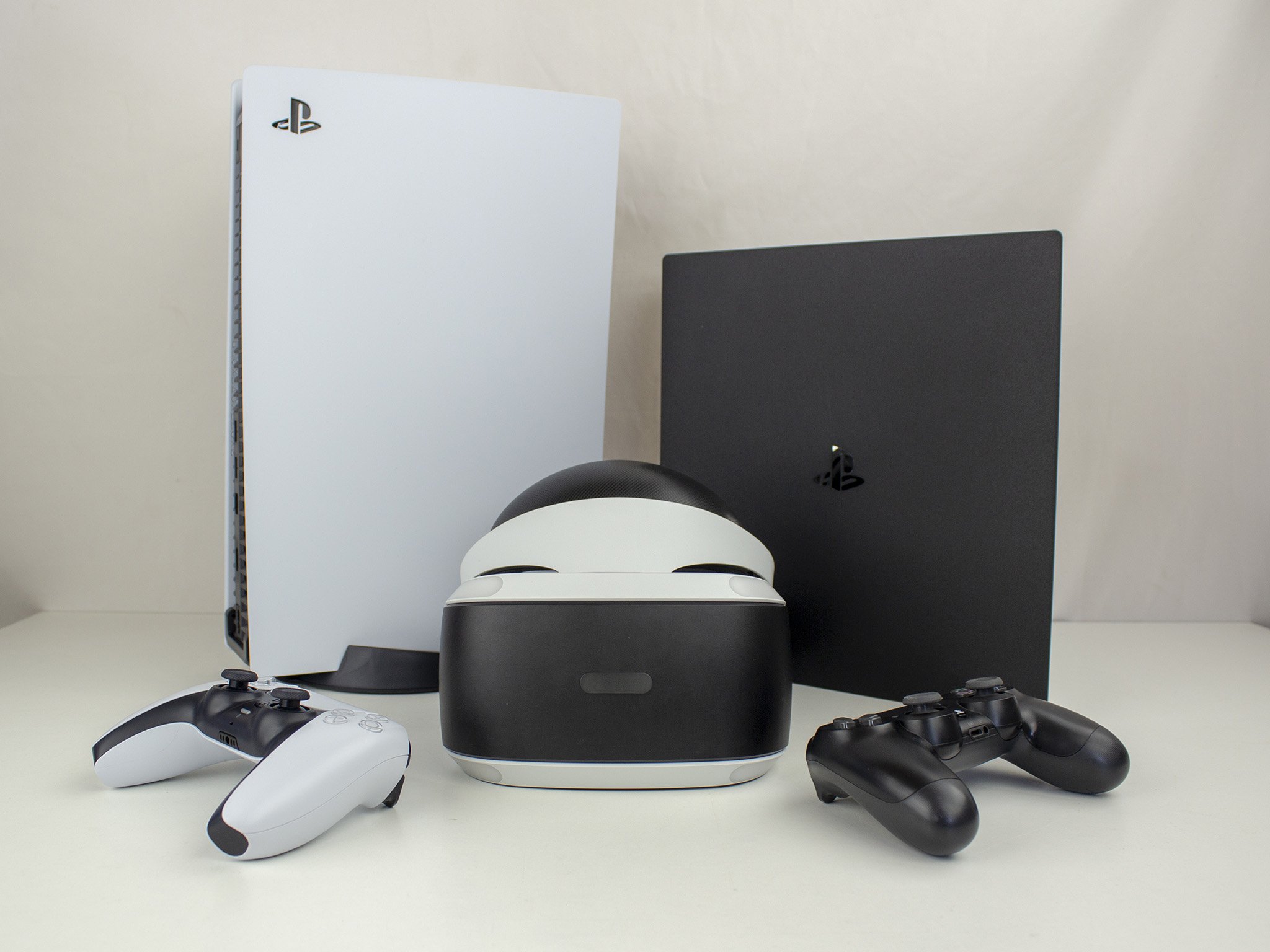Everything we know so far about the next PSVR
Sony is stepping it up in a big way for a new generation with PS VR2.
Jump to:- What is the PSVR 2?
- PSVR 2 specs
- Price
- Release date
- The new controllers
- Display and lenses
- Wired or wireless?
- Room scale tracking
- Headset design
- Eye-tracking
- Face-tracking
- New types of games
- Will the original PSVR work on the PS5?
From brand new controller designs to higher-fidelity visuals, there's a lot to get excited about with PS5 VR. PlayStation VR on the PS4 has been a success story in some very real ways, and Sony plans to continue that trend on the PS5. With over 5 million units sold and a steady library of games, Sony proved that VR gaming could be successful as an add-on to an already successful console. Sony has confirmed that the PSVR 2 will be a PS5-exclusive release and will debut in 2022 with some exciting new technologies in tow.
If you've ever played or owned an original PSVR, you'll know that, while it's a great overall experience, there are certainly some improvements that can be made. Sony Interactive Entertainment CEO Jim Ryan says Sony is focused on making PS5 VR "the ultimate entertainment experience with dramatic leaps in performance and interactivity." Officially, the new PS5 VR experience is called the PlayStation VR2, or PS VR2 for short. Sony will be shipping the headset with a higher resolution, wider FoV, DualSense-inspired controllers called PlayStation VR2 Sense, and a single-cable connector.
What is PSVR 2?So far, Sony has announced the PSVR 2 in a strangely piecemeal way. The first PSVR 2 announcement was a bit light on details, but the reveal of the PS5 VR controllers gave us a much better look at what to expect from Sony's second-generation VR system, and the CES 2022 PSVR 2 announcement finally gave us a proper name and specs for both the headset and controllers.
The PlayStation VR2 - or PSVR 2 as we like to call it - will connect to the PS5 with a single cable and can be used to interact with virtual reality content on Sony's next-generation console, which will include games, movies, and social features.
The PSVR 2 will ship with a brand new, redesigned headset, including new motion controllers - called PlayStation VR2 Sense controllers - that feature headset-based tracking, adaptive triggers, and multiple input methods for the ultimate VR experience. It is not known at this time whether Sony plans to offer a wireless version in the future.
PSVR 2 specsThe PSVR 2 is made up of two major components: the headset, and the controllers. So far, we've got a notable number of official specs for the headset itself.
| Category | PlayStation VR2 |
|---|---|
| Device | PlayStation VR2 headset |
| Display | OLED |
| Panel Resolution | 2000 x 2040 per eye |
| Refresh rate | 90Hz, 120Hz |
| Lens separation | Adjustable |
| Field of View | 110-degrees |
| Tracking | 4 on-headset cameras |
| Eye-tracking | Yes, IR camera for each eye |
| Sensors | Six-axis motion sensing |
| Haptics | Single vibration motor in the headset |
| Audio | Built-in microphone, stereo headphone jack with 3D audio support |
| Cable | Yes, USB Type-C |
At CES 2022, Sony also gave us a number of specs for the PlayStation VR2 Sense controllers, but we're still missing a few - like battery capacity - that we'll find out closer to release.
| Category | PlayStation VR2 Sense controllers |
|---|---|
| Device | PlayStation VR2 Sense controllers |
| Tracking | Six-axis motion sensing, IR LEDs tracked by headset cameras |
| Right controller buttons | PlayStation, options, circle, cross, R1, R2, R3 (stick click-in) |
| Left controller buttons | PlayStation, create, triangle, square, L1, L2, L3 (stick click-in) |
| Touch sensors | Capacitive finger touch detection |
| Haptics | Single controller actuator, trigger effect |
| Communication | Bluetooth 5.1 |
| Port | USB Type-C (for charging) |
| Battery | Built-in Lithium-Ion rechargeable battery |
Sony surprised many in 2016 when it launched the PSVR for $400, which was at least 50% less expensive than its nearest competitor, the Oculus Rift. Now that the overall price of VR headsets has come down, Sony likely won't hold the price advantage with the PSVR 2 that it had with the original PSVR. We don't yet know how much the PSVR 2 will cost. Sony will likely debut the PSVR 2 around the same price point as its nearest competitor, the Oculus Quest 2, which sells for $300 and up.
Aside from the PlayStation name, one of the biggest reasons to buy an original PSVR over other VR headsets over the years was the sheer cost savings versus many other VR solutions. We've seen VR hardware prices drop significantly since consumer VR went big in 2016, and the original PSVR itself can easily be found for less than half the price it launched at so many years ago. As such, we expect Sony to release its second-generation VR system at the same price, or less than what the original PSVR released for.
When will PSVR 2 be released?Sony has yet to announce an official specific release date for the PSVR 2, but has hinted that it will make its debut in 2022. Rumors corroborate a 2022 release date, likely sometime in the Fall. For now, there are still several titles scheduled to come out for the original PSVR in 2021, including ones that run in enhanced mode on PS5 hardware.
What will PSVR 2 controllers look like?With the original PlayStation VR on the PS4, Sony utilized the PlayStation Move controllers that it had demonstrated before it announced its virtual reality intentions. At the time, the PS Move controllers looked to be in direct competition with the Nintendo Wii. As such, the form factor worked well enough for VR, but a few issues cropped up pretty quickly. Not only is there no joystick or touchpad for virtual character movement, but the single-point camera system caused dead zones in movement tracking.
Full 3D tracking is handled by the headset, which sees the unique rings around the controller.
Sony's official PlayStation VR2 Sense controller unveiling showcased a unique design compared to other VR headsets. It looked a bit like an ideal combination between the Valve Index's Knuckle controllers and the Oculus Touch controllers that ship with Oculus Quest 2. Undoubtedly, the most iconic visual change is the halo rings that wrap around your hands while holding the PSVR 2 controllers.
Like the Oculus Touch controllers, these rings are designed to help the headset track the controllers in 3D space. This is done by an array of LEDs hidden within the rings which the camera on the PSVR 2 headset will see.
That's a significant upgrade from the single light point on the original PSVR Move controllers and will ensure that tracking in 3D space is a lot more accurate than with the first PSVR.
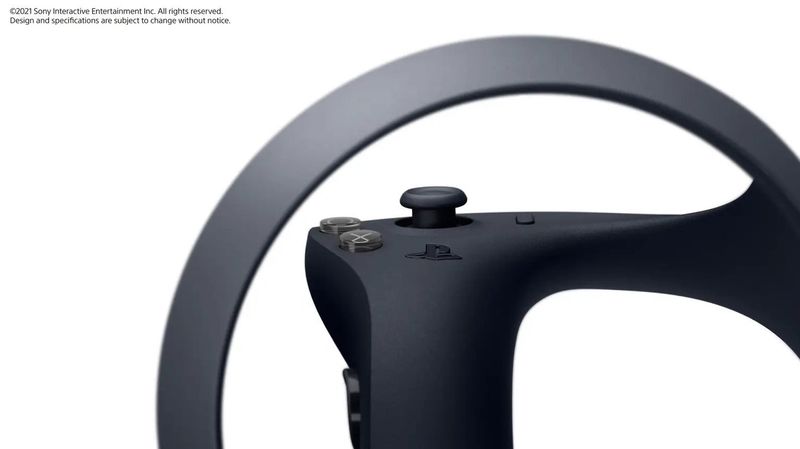
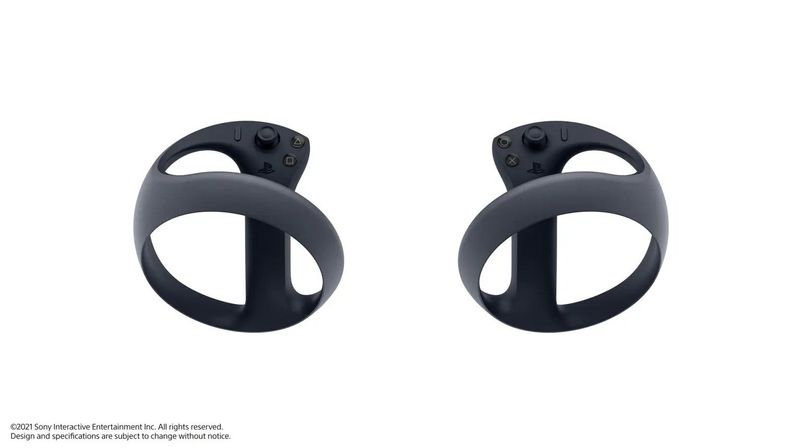
A prominent joystick is found at the point where your thumb rests on each controller, which will enable gamers to more easily move around virtual spaces than is currently available with PS Move controllers. Joysticks or touchpads are found on all other major VR systems, which brings PSVR 2 in line with other systems for virtual movement options.
Each button can sense your touch, and the joystick will make it easier to move around virtually.
A significantly more simplified button layout can be found on the top of each controller, contrary to the overly complicated scheme on the PS Move controllers. The right controller has two main action buttons next to the joystick - that's circle and cross - and an options button on the opposite side of the joystick.
As you might expect, the left controller features the other two action buttons - that's triangle and square - as well as a create button used for sharing videos, screenshots, and other media from your PS5.
Compared to the PS Move controller - which featured the same button layout on each controller and had absurdly small buttons because of it - the PSVR 2 Sense controllers should be a lot more comfortable to use.
Additional buttons have been placed around the back and side, including one trigger button that can be used with an Index finger - that's R1 on the right controller and L1 on the left - and one grip button that can be squeezed with your ring finger, labeled R2 on the right controller and L2 on the left. Each joystick is also a button: R3 on the right controller and L3 on the left.
Sony has also placed capacitive touch sensors around the backside of the controller grips which will detect when fingers are holding the controller. This will enable almost 1:1 hand movements in VR, as your virtual hand's fingers will close into a fist when you grip the controller and open up when you let go.
Advanced haptics and Adaptive Triggers from the PS5 controller are in the PS5 VR controllers.
Something you can't see - but will certainly feel - are the new haptics and the adaptive triggers inside. Sony launched the PS5 with a brand new controller that blows other controllers on the market completely out of the water, and it's thanks to both of these new features that will also be in the PSVR 2 controllers.
These Adaptive Triggers can actually push against your finger as you press them, delivering a palpable sense of friction and tension in VR games that no other platform currently can. The haptics, of course, will create a deeper sense of touch and environmental interaction in games thanks to their ability to differentiate between fine textures like sand, stone, and other materials.
Last but not least, the latest rumors say that Sony will actually bundle these new controllers with the PSVR 2. That's a huge step in the right direction, as the PS Move controllers were sold separately from the original PSVR. That led to a huge gap in how VR games were controlled when played with a PSVR headset.
Bundling in the controllers will ensure that all games can be played using the proper motion-tracked controllers and will provide a consistent input type for developers and gamers, alike.
Will PSVR 2 have an improved display and lenses?As with the original PSVR, Sony is outfitting the PSVR 2 with a high-quality OLED display, which will deliver far better color representation and black levels than the LCD panels used in headsets like the Oculus Quest 2. This OLED panel features a resolution of 2000 x 2040 pixels per eye, giving it a total resolution higher than 4K.
PSVR 2 will use an OLED display with 4K resolution, HDR support, and both 90Hz and 120HZ support.
This OLED display also supports HDR output, which further widens the available color palette and brings it in line with expectations of visual quality from the PS5. The PSVR 2's display supports both 90Hz and 120Hz modes, which could mean that developers will allow users to choose between quality and performance presets, just as on many regular PS5 games.
Based on the resolution of the display and the approximate size of the display panels, the PSVR 2 should feature an incredible pixel density of over 700 pixels per inch (PPI). Given that the original PSVR display was only 386 PPI, this likely means that the PSVR 2 display is twice as pixel-dense, which will reduce the screen door effect and mura. In short, that means you won't see the individual pixels as easily as you could on the original PSVR.
New lenses widen the field of view (FoV) to 110-degrees - an improvement over the 100-degree FoV on the original PSVR - meaning you'll be able to see more of the virtual world around you without having to move your head.
A physical IPD adjustment wheel will make it easy for multiple players to join in the fun without having to re-run the setup process each time.
Per recent rumors, Sony will be including a proper IPD adjustment wheel on the PS5 VR headset. That means, unlike the original PSVR where IPD (inter-pupillary distance) adjustment was a massive headache (sometimes, literally), PSVR 2 will feature a simple wheel on the side of the headset to adjust the IPD, making it easier for multiple players to join in the fun without having to re-run the setup process each time. That's a huge upgrade in and of itself.
Will PSVR 2 be wireless?At launch, the PSVR 2 will not be wireless. A single USB Type-C cable will be used to plug the PSVR 2 headset into the PS5 using the USB Type-C port right on the front of the console. That's a huge upgrade from the original PSVR, which required a separate processing box to be plugged into power, HDMI cables to be routed to the box from the console, and several cable connections from the PSVR headset itself.
Will PSVR 2 have better tracking?Sony is utilizing what's called inside-out tracking for the PSVR 2. This is the same tracking method used by the Oculus Quest 2, and utilizes four cameras on the PSVR 2 headset to track the headset's position in the room, as well as the controllers themselves.
PSVR 2 utilizes four cameras on the headset to track the headset's position in the room, as well as the controllers themselves
Each controller has a series of IR LEDs that can be seen and tracked by the cameras on the headset, which are used in conjunction with the six-axis sensors inside each controller and the headset itself. This means that any movement in real life will naturally translate to VR as you would expect from a modern VR headset. Gone are the days of the extremely limited PSVR single-camera tracking.
Does PSVR 2 have a new headset design?Despite revealing the controllers in 2021 and most of the PSVR 2's specs at CES 2022, Sony has yet to show off the headset itself. Despite not knowing what the headset looks like, we do know several interesting things about it.
First up is the inclusion of a haptic feedback motor inside the headset; a first for the VR industry and a potentially ground-breaking feature depending on how Sony plans to implement it. Sony says that, with this sensor "gamers can feel a character's elevated pulse during tense moments, the rush of objects passing close to the character's head, or the thrust of a vehicle as the character speeds forward."
A new vibration motor inside the headset will make players actually feel punches and shots.
Given how small, unnatural movements can make players sick, Sony will need to ensure this motor is subtle enough to keep users from getting headaches or dizziness.
Inside-out tracking, as discussed above, means that cameras mounted on the headset would be tracking your position in the room, as well as the position of the controllers. Having a vibration motor in the headset could potentially cause anomalies in how these cameras view the world around them and interfere with tracking. If you've ever been recording a video on your smartphone and someone sends you a message, you'll immediately understand what's at stake here.
But a vibration motor, especially a haptic motor as sensitive as we know is included in the controllers, could deliver some seriously amazing immersion for players who are already comfortable in VR. Feeling a punch in a game like Creed or the smack of a shell against your helmet in something like Pistol Whip would be out of this world.
Cameras mounted on the headset would track your position in the room.
In addition to force feedback, we expect the PSVR 2 headset to be lighter and smaller than the original PSVR. Job postings from Sony back in August 2020 show that the company is working on new designs for lenses and display housing, which both add considerable bulk and weight to many VR headsets.
It's important to note that this specific job posting states that the project overview is to develop a headset "with a view to five years from now," so it's possible his posting is for the PSVR 3 (or another Sony headset), not the PSVR 2. Even still, there's little doubt that Sony will have improved the weight and overall design to make the PSVR 2 more comfortable than the current iteration since that's a standard part of tech improvement on a lot of devices.
Lastly, is the discussion of being wired. This one is a huge disappointment for some folks, but being wired may have several advantages for Sony in this upcoming generation. For instance, by foregoing the wireless option, Sony could make a much smaller headset since it wouldn't need all the computation, wireless chipsets, and battery inside.
There's probably a very good reason Sony is saving the headset reveal for last, and we're hoping it's to unveil something revolutionary.
Will PSVR 2 have eye-tracking?Yes, the PSVR 2 will have eye-tracking thanks to IR cameras inside of the headset.
While eye-tracking sounds a little freaky initially, the term eye-tracking is simply a way for the PSVR 2 to improve the graphics in the exact places your eyes are looking at. This type of rendering is called foveated rendering and means that the PS5 will render only the center of your vision in the highest resolution. Sony confirmed at CES 2022 that the PSVR 2 will have both eye-tracking and foveated rendering support
Eye-tracking enables higher resolution where you're looking and better performance all-around.
Everything in your peripheral vision will feature a lower resolution (since your eyes automatically lower focus detail on these segments of vision anyway) and help increase the performance of VR games by over 60% in many situations. In the video below, you can see an example from Nvidia that showcases different ways of implementing foveated rendering with eye-tracking.
Remember that viewing something like this on a 2D monitor doesn't give the full effect, as your eyes won't be able to see the lower-resolution edges the same way in VR space since the system will automatically move the center-point based on your eyes.
Meta uses simple foveated rendering on the Oculus Quest and Oculus Quest 2, but this method breaks apart a bit if you use your eyes to look around more than your head. That's because the edges of the display are always lower resolution, while Sony's method would dynamically move this higher-resolution center spot around depending on where your retinas are aimed.
Eye-tracking also enables new methods of interacting with the virtual world and other players in virtual worlds. Sony said its eye-tracking technology could be used to help players better select objects or menus in VR, and there's nothing quite like making actual eye contact with someone to make a situation feel more real.
Will PSVR 2 have face-tracking?While Sony is definitely implementing eye-tracking into the PSVR 2, face-tracking is likely another generation away.
Social networking is looking to take an entirely different meaning with the future of VR. You've probably seen plenty of sci-fi films and movies depicting artificial worlds that we'll all live in one day (think more like Caprica than The Matrix), and a lot of living and socializing in such a world relies heavily on face and body language. Right now, social applications like VRChat are an impressive look at what's to come in the future. But they're missing one huge part of communication; body language.
Sure, you can move around freely and express yourself with hand gestures and head movements, but no one can actually see your face or see the nuances our brains pick up when someone is holding their shoulders just a tad lower than usual. Platforms like Spatial present your actual human face on a virtual avatar, and the difference couldn't be more noticeable. While these projected faces can look a bit odd at first, there's no denying they're considerably more effective than the current environment of Zoom meetings and crappy video cameras.
This one might be a bit further out than PSVR 2.
This one might be a bit further out than PSVR 2, but there's still hope that this patent from Sony shows that it's been worked on for some time and could very well be implemented in a future PSVR release. Having facial tracking means playing with your friends during Call of Duty in VR could feel far more like an actual experience, as you'll clearly be able to see what they think even before they say it.
While the above video showcases Facebook's Oculus face tracking prototypes from a few years ago - which has not been released in any consumer product yet - it shows that this technology is far more along than some might have supposed. Like finger tracking, this isn't necessary for the VR experience, but it goes a long, long way in making it feel significantly more real.
What types of games will be on PSVR 2?It might sound a bit strange to wonder what sorts of games you might find on a VR headset - especially given that the original PSVR has had regular game releases since its release in 2016 - but it Sony looks to be experimenting with several different types of releases for VR titles with the PSVR 2.
At CES 2022, Sony announced Horizon Call of the Mountain. This new entry in the Horizon series takes place in the same universe as Horizon: Zero Dawn and Horizon Forbidden West. The brief teaser trailer above doesn't tell us much about the gameplay, but it certainly reveals the incredible visual experiences we're going to see on the PSVR 2.
Horizon Call of the Mountain is a separate, VR-only title being developed by Guerrilla Games and Firesprite but, according to several leaks, Sony will be targeting "hybrid AAA" releases for the PSVR 2 instead of standalone VR titles. In a nutshell, this means games that Sony will be developing with PS5 VR in mind will also be playable outside of VR.
Games like Hitman 3 and Resident Evil 7 on the original PSVR are fantastic examples of games playable both on a TV and in VR, where the VR perspective of the game is more interactive and immersive for the player.
This would significantly cut down on the cost of development for VR games and, simultaneously, bring more high-profile, AAA-quality games to the PSVR 2 as a platform.
Since this is just speculation based on leaks or rumors, it's not clear how many games Sony will be taking the hybrid approach with. The company's insistence on keeping the PSVR 2 tethered to a PS5 likely means that developing games for multiple gaming perspectives would be preferred since it's more budget-conscious.
Will the original PSVR work on the PS5?Yes, Sony does still support the original PSVR on the PS5. To use the original PSVR on the PS5, you'll need to claim a free adapter that connects the PlayStation Eye camera to the PS5, since that dedicated port from the PS4 is gone. The PSVR experience on PS5 is largely identical to what you're used to on PS4, and that's because Sony doesn't allow PS5 games to support the original PSVR. You'll need a PS4 copy of the game to play on PSVR. All original PSVR accessories also work on the PS5.
Both the PS Move Motion Controllers and the PlayStation VR Aim Controller will work with supported PS VR games on PS5.
Newer titles that ship with VR support, like Hitman 3 for PSVR, actually come with both PS4 and PS5 versions of the game when you buy it. Folks that want to play in VR will need to download the PS4 version of the game and launch it from their PSVR. Many PSVR games will feature enhanced visuals and resolution when running on a PS5 but don't expect any drastic overhauls. Sony does not allow developers to target PS5 hardware with specific enhancements. Think of it like running a more powerful PS4 Pro; at least, that's sort of how the game is allowed to see things, anyway.
